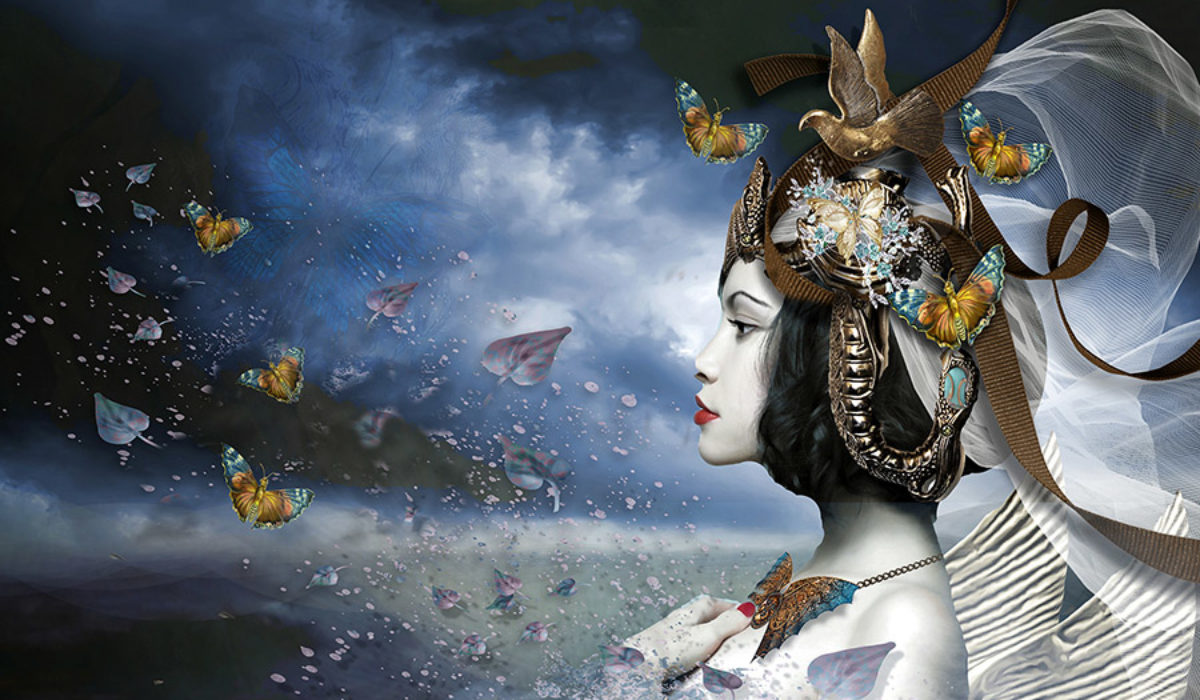— The featured artist of Issue 41 of Living the Photo Artistic Life magazine is AWAKE artist Janet Sipl (USA), an exciting new voice in digital artistry. Kick back and enjoy my interview with her here on Quill and Camera!
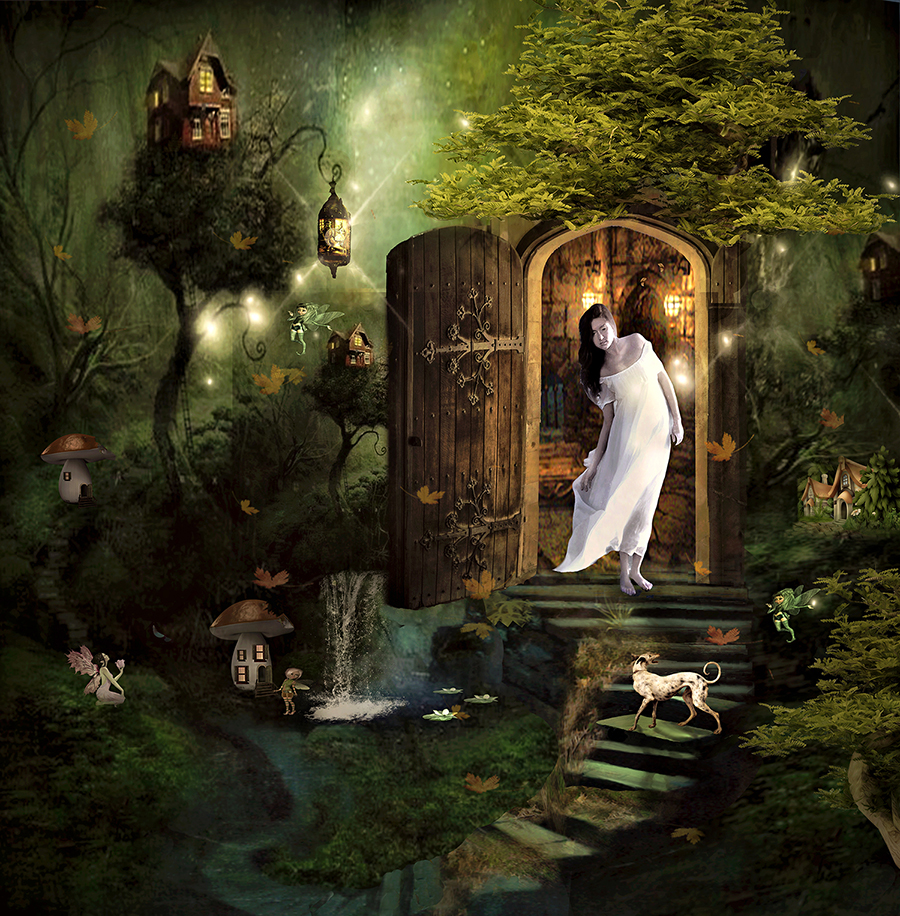
Q. You’ve got a strong photography background, I believe?
Oh, yes. A long-time photographer — though I now consider myself an artist!
I’m also a retired teacher of 35 years. (In fact, while teaching, I was once named “Teacher of the Year” by the National Teacher Training Institute and presented the honor by PBS.) I also taught technology integration to teachers, wrote computer curriculum for Ohio Schools, and successfully integrated photography into the classroom curriculum.
As a photographer, I have earned numerous photographic awards (even “Best in Show”) in the U.S. and Canada. I am a retired member of the Cleveland Photographic Society, and I have taught macro photography classes to adults and students. I have been published in David Busch’s Book “Digital Photography Bucket List” (and one of my new photo-artistic images will be published soon in an upcoming book by Sebastian Michaels). Also, as part of my new Photo Artistic Life, I have been published in all consecutive issues of Living the Photo Artistic Life magazine since I joined the class. Being featured in Issue 41 was especially exciting.
Currently, I have my artwork displayed and for sale in multiple restaurants, doctors’ offices, and hair salons, which has proven to be very profitable.
Q. After 35 years of teaching, what was it that pulled you away from the world of traditional photography and into this huge new world of creative digital artistry?
It is funny that you ask that question. It’s one that I get asked all the time. I guess, since I’m retired, people must think I should be slowing down and should be doing less. They seem to think I absolutely should not be starting something completely new.
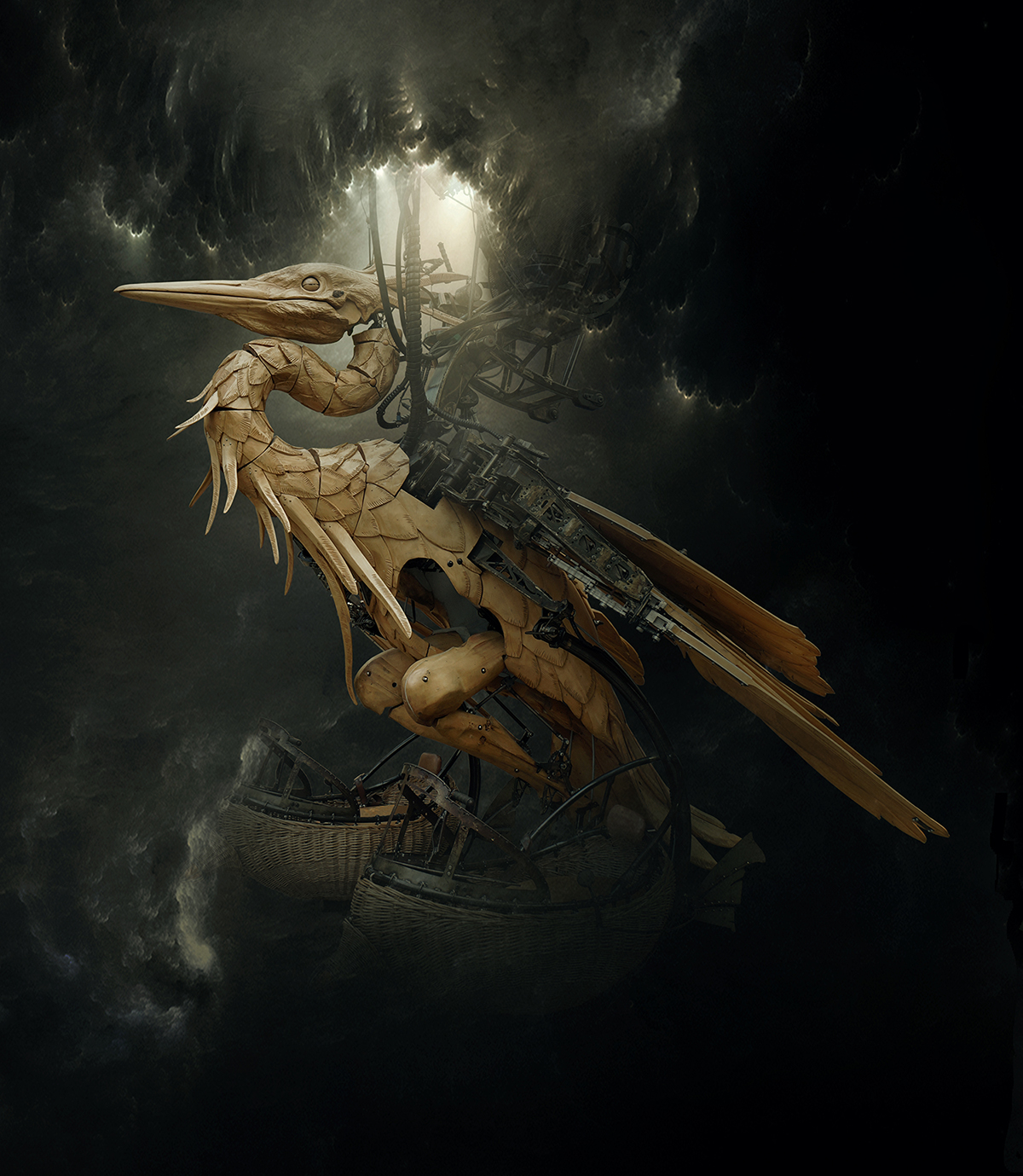
Boy are they wrong! Just because you spend the first part of your life doing one thing, why does that mean you can’t then throw yourself just as eagerly into something else?
I have always felt that the only way to achieve fulfillment and be truly satisfied is to work at what you are passionate about. And I just decided not to settle until I found it.
Even so, I was as surprised as anyone (and absolutely amazed really) when I realized I had finally found my true passion. This world of “Photoshop Artistry” and “Living the Photo Artistic Life” was what I had been looking for. It was the key to unlocking a bright new future — full of fun, growth, and fulfillment. And that’s saying something when you are retired and already in your 70s! How great it would have been to have found this course years ago. But, you know, it is never too late to start something new, and I am living proof: you CAN teach an old dog new tricks.
Taking that first step to start this journey was the ultimate transforming experience of my lifetime. And it just keeps getting better.
Q. How do you view creativity?
I think creativity is the process of taking the materials of our reality and our imagination and producing something new from it. It is what allows us to expand our world and inspires us to say, “What if?” and “What’s next?” It makes us receptive to what might be possible, and it fosters in us the courage to not be afraid of the unexpected. It instills that drive to go above and beyond.
I guess I would also say that “creativity” is that certain something that drives us to take risks and try something new and different.
Without hesitation, I would say that creativity is a very powerful process and it has the ability to change our whole reality. When you think about it, creativity has taken us from drawing on cave walls to painting in oils and watercolors to capturing the most extraordinary photographs to now being able to digitally create our artwork. (Makes you wonder what will come next!)
Q. Who or what inspires your work?
That’s an easy question to answer: my husband, George. I am so lucky to be married to my best friend and my greatest inspiration. He supports and encourages me every step of the way. He has always been the talented one in the family, a composer, musician, photographer. I call him my all-around creative genius. He inspires me in everything he does, and his artistic appetite to learn, grow, and create is both limitless and highly contagious. I have seen him achieved so much through his artistic talent and creativity: gold and platinum albums, multiple Emmy awards, an Oscar nomination, a Cannes film festival award, and so much more.
BUT, more importantly than all this, he has also shown me that it takes effort and knowledge, not just talent and creativity, to feel fulfilled and be successful. There is no short cut! Inspiration and creativity is not enough, you need to put in the work.
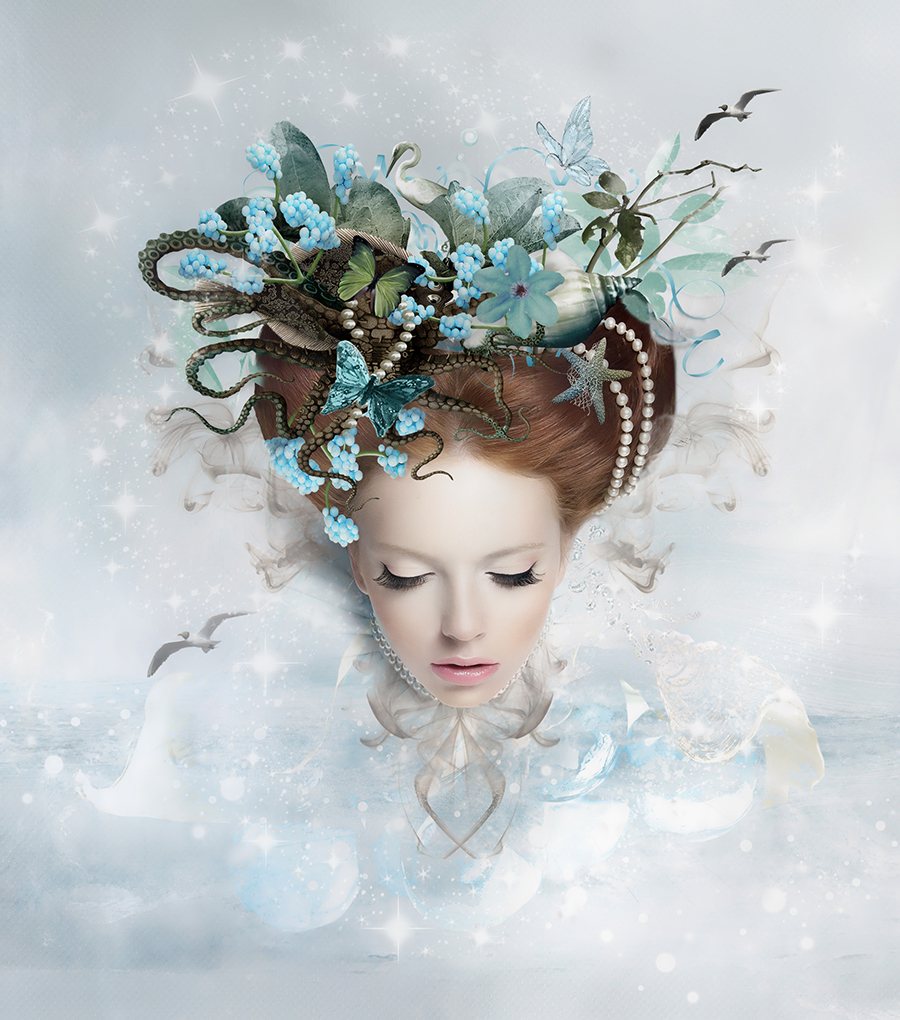
Q. When you come up with an idea for a piece, how do you proceed?
Whenever I get an idea or feel struck with inspiration, instead of just jotting it down in my notes, I will open Photoshop and QUICKLY put together a background with a model or some other elements to reflect my vision. It is like sketching before you start to paint. I call these my Quick Sketches.
Sometimes I start with a model or central subject and then bring in a background and add elements from there. Other times I may start with a background and just dump elements on layers that will support my vision or theme. At first, I don’t worry about placement, blending or tonality. I just need to get the core idea down. Only when the canvas starts to speak to me do I move on to the rest.
Q. Once you have the Quick Sketch in place, do you stick with that idea, or do you reshape it as you go?
Well, again, the canvas has to speak to me. Often, the image itself has a mind of its own and will take me off in a direction I hadn’t planned. That is all part of the creative process. You won’t know exactly what direction will fulfill your vision until you have actually put something down on that blank canvas and you begin see how it’s coming together. That is why I love to do my Quick Sketches first.
I can’t emphasize enough how important it is to jump in and put something down. You will not energize your creativity by just staring at a blank canvas. A little workflow tool that I use, which has helped me immensely, is to keep two standard sized blank canvases open on my desktop, one vertical and one horizontal. It makes it so easy to just click on one of them … and then “Bingo!” I’m off looking for an image to throw on there. In but an instant I have started the process. Seems simple, but this really makes a difference, because it is always the first step that is the scariest, and our hesitancy often holds us back from our forward progress.
Not that every piece makes it past the Quick Sketch stage. I have two folders on my desktop. One is for “In Progress” work and the other is for “Ideas.” I often find that I am combining various saved ideas and they then become an active work in progress. I never throw anything away, everything gets filed. And it’s having a good filing system that helps keep these “idea” files and images organized and at my fingertips. I need to know what I have, and I need easy access to it all.
Q. Do you try to complete a composition in one sitting, or do you let works sort of simmer, tinkering on them over a span of time?
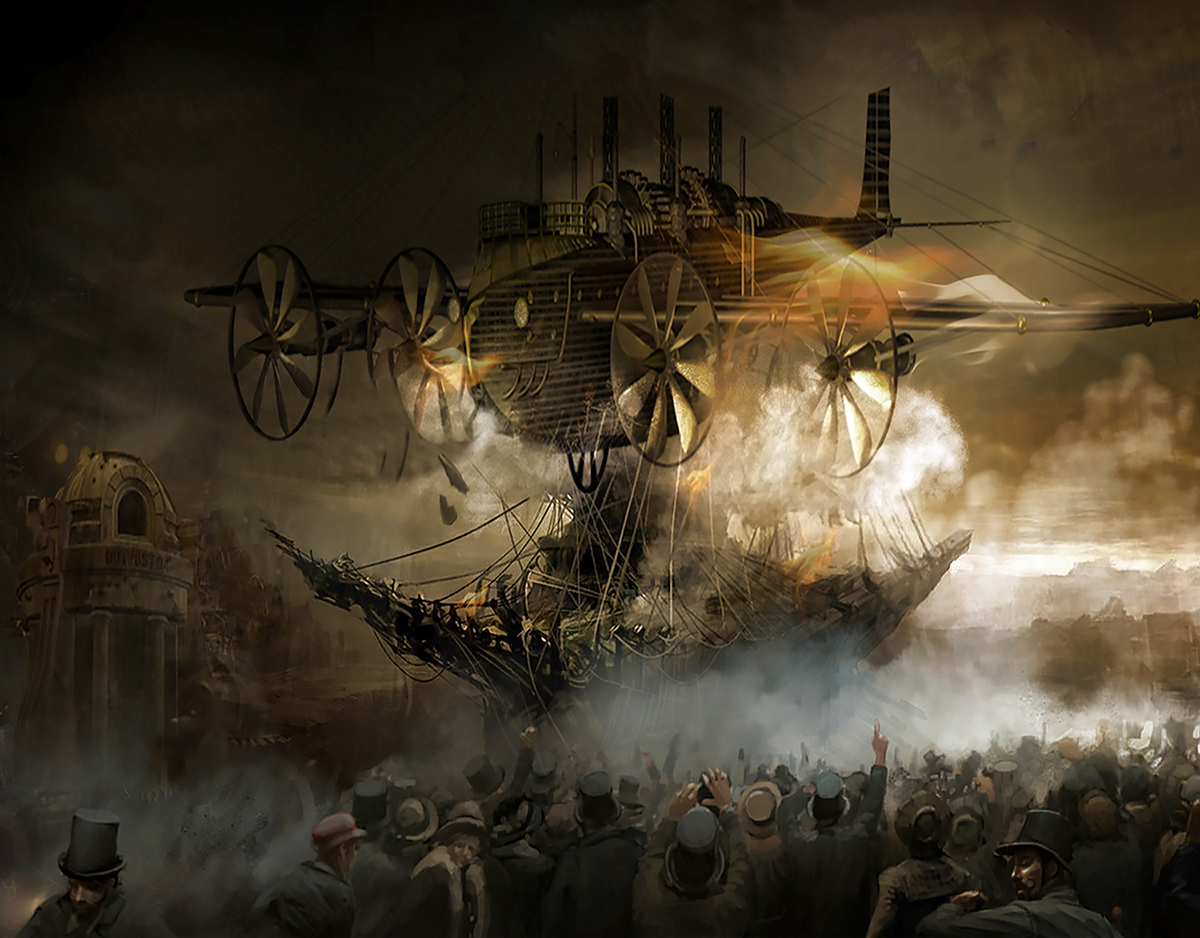
I tend to get absorbed in the creative process, and it’s hard not to get totally hooked when you like what you see coming together on the canvas. So, to honestly answer that, I would say: Yes, I TRY to finish it all in one go. (And being retired certainly makes that easier.)
If I find that the Quick Sketch I created is speaking to me and going in the right direction, then I will continue to work on it, and I usually do finish it in that one session. This means the whole developing and refining process, including the purchasing and/or replacement of the model photos, the blending and placement of elements, working with the background and adding of textures, as well as all the final post-production tonality steps.
But ultimately, depending on the piece, this may turn out to be a 15-hour project or a 50-hour project. Hard to do that in one session!
I just never know, and I never set time limits on myself. (Just ask my husband! I have a habit of eating my meals at the computer and staying up all night working on my art. I get so absorbed, I don’t even realize the time passing. Which is another reason I’m so lucky to have such a supportive husband.)
Q. How would you say this “Photo Artistic Life” has changed you?
There is no doubt that “Living the Photo Artistic Life” has profoundly impacted my life. It has allowed me to grow way beyond my earlier self, unleashing an unknown inner creativity and self-confidence, empowering me to take risks and explore an entirely new world. It has motivated me to go where I’ve never gone before.
Anymore, I don’t just call myself an artist hoping it’s true … I honestly feel like an artist. I know it’s true.
In my case, stepping into the world of digital artistry has changed the whole fabric of my being, and I feel it has given me the aptitude of singular focus. My art now speaks a language that reflects a consciousness of purpose — which, I hope, allows me to touch the lives of others through my creative work.

